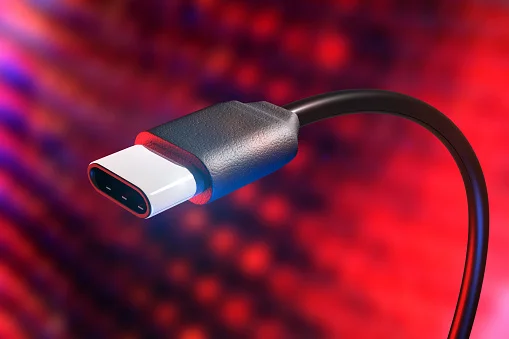EU lawmakers want to reduce electronic waste by requiring all small and medium-sized electronic gadgets to use USB-C chargers for everything. Nevertheless, MEPs will accept exceptions for smartwatches, health trackers, and other devices too small to have a USB-C port.
“With half a billion chargers for portable devices shipped in Europe each year, generating 11,000 to 13,000 tonnes of e-waste, a single charger for mobile phones and other small and medium electronic devices would benefit everyone,” said Alex Agius Saliba, the MEP responsible for handling the legislative proposal.
MEPs also want the European Commission to address the rising fragmentation in the wireless charging market. “We are proposing a truly comprehensive policy intervention, building on the Commission’s proposal by calling for the interoperability of wireless charging technologies by 2026 and improving information given to consumers with dedicated labels, said Agius Saliba.
The USB Type-C connector was intended to be the pinnacle of external connectivity. There’s no limit to what this port can do: it can run DisplayPort video signals, Thunderbolt high-speed data transfers, and even standard USB. For the most part, device manufacturers have embraced this new standard with open arms.
As of September 2021, the EU is attempting to force manufacturers to use a standardized charging interface for smartphones and tablets. With a 43-2 vote, the European Parliament’s Internal Market and Consumer Protection Committee (IMCO) has expanded their initial proposal to include more devices, such as laptops, handheld gaming consoles, cameras, and more.
Despite the fact that many Android device makers have already adopted USB-C, Apple has opted to combine USB-C and Lightning on some of its devices. The USB-C port is fragmented as well, with some laptops using the newer standard while others are still using traditional barrel chargers.
The European Union has been imposing a common charger solution for years, but Apple has been very reticent to replace its proprietary Lightning port with USB-C on its iPhones and iPads, which have sold more than a billion units. The situation may slowly change, though, as a new generation of iPad Pro models uses a USB-C port.
One of the stated goals of this standardization practice is to save money and save electronic waste in European landfills. Therefore, Apple is unlikely to merely include a Lightning adapter for USB-C cables since that’s simply another proprietary dongle that can be both easy to use and ineffective. Apple already has gone all-in on USB-C with its iPad Pro and Air lines, with only the entry-level iPad using the older connector. It’s the iPhone lineup that hasn’t changed much. With the latest iPhone models, Apple has stopped bundling chargers with the devices, instead of including a USB-C to Lightning cable. It seems logical to switch the Lightning connector for another USB-C connector.
This law isn’t final yet, as it’s only recently passed through the Internal Market and Consumer Protection Committee. Following that, it would be presented to the entirety of Europe’s Parliament in the May plenary sessions, which might happen as early as May 2nd. If Parliament approves this draft legislation, member states will need to work together to finalize the standard and then device manufacturers will have to start following along.

Leave a Reply
You must be logged in to post a comment.